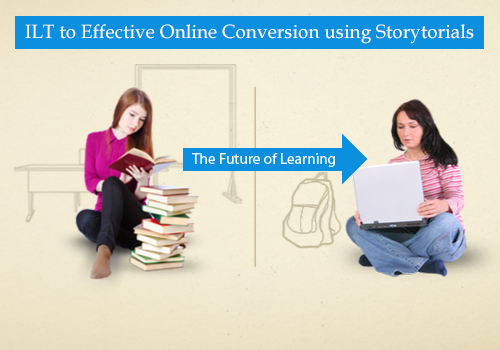
As the financial industry rapidly evolves, there is an increasing need for professionals with the skills to meet the changing dynamics. This article outlines strategies to build effective L&D programs in the banking and financial services industry.
The Rising Skills and Capability Gap in the Banking and Financial Services Industry
The banking and financial services industry is undergoing rapid transformation, driven by several factors, including the rapid digitalization of services, the focus on customer experience, rising investments on IT and digital tools, and the modernization of dated systems and processes. This is creating a gap in the skills and capabilities needed to meet the new digital world.
The need for digital skills is becoming increasingly apparent, with the digital banking revolution leading to an increased demand for professionals who can handle digital platforms, tools, and services. Shifting customer expectations and an increasing focus on customer experience have led to a need for new customer service capabilities.
A study that explored banking transformations explains that trailblazing firms are gaining ground on traditional banks by employing novel “talent strategies, organizational models, and culture.” Those banks have placed more focus, not just on capital but also on personnel, on IT to create better digital experiences for customers – up to 1.3 times more people focused on digital areas of banking and 1.6 times few people in back-office areas.
All of this has widened the skills gap, expanding several challenges when it comes to L&D in the banking and financial services industry.
Challenges of Building an Effective L&D Program in the Banking and Financial Services Industry
Building an effective L&D program in the banking and financial services industry is far from easy. The industry is facing several challenges, including rapidly changing regulations and technologies, high cost of training, low retention rates, the need to create learner-centric programs, and the ability to cater to diverse learning needs.
- The cost of training is often high, leading to a need to find cost-effective solutions to ensure that the training is effective and that employees are retaining the new skills and knowledge.
- Additionally, the industry is facing a low retention rate, with many employees leaving shortly after the training.
- There is a need to create learner-centric programs because employees have limited time and are at different levels of skill and knowledge.
- The industry is also facing the challenge of supporting a hybrid workforce, with many employees working remotely.
- Employee well-being is another factor that is high on the list, with the need to create a safe and supportive environment for employees and ensure that they are engaged and motivated.
How Can eLearning Help You Solve the Skills Challenge in the Banking and Financial Services Industry
eLearning can help organizations create learner-centric programs that cater to the diverse learning needs of their employees. Additionally, eLearning can help organizations support training for a hybrid workforce where many employees work remotely.
Training Programs in the Banking and Financial Services Industry that Can Be Converted to eLearning
There are several training programs that organizations in the banking and financial services industry should consider converting to eLearning. These include compliance, info security and cybersecurity, onboarding, DEI, professional skills training, soft skills training, customer service, and product training. Converting such training to an eLearning modality serves the following purposes:
- Compliance training can be tailored to match regional guidelines, values, and laws.
- Info security/cybersecurity can be matched with employee needs – individual contributor vs management vs executive levels.
- Onboarding, delivered in a self-paced format ensures that all employees are presented with the high-level vision and values of the organization, regardless of location.
- DEI (Diversity, Equity and Inclusion) programs, when converted to eLearning, encourage employees to take time to carefully consider issues and how they impact the individual, teams, and the organization.
- Professional skills required for the various job roles within an organization vary greatly, but opting for eLearning allows employees to customize their own training, making sure it benefits the employee and the organization.
- Soft skills training, in an eLearning format, creates a safe-to-fail environment where employees can experiment with different approaches, get feedback, and try again.
- Customer service training programs can present likely scenarios that are common to specific job roles, regardless of location or time zone.
- Finally, product training through eLearning can quickly spread through an organization as they are aligned with product, process, or process changes.
What Are Some of the Most Effective Training Strategies in the Banking and Financial Services Industry?
Organizations in the banking and financial services industry can leverage several effective training strategies to ensure that their L&D programs are effective and engaging.
- Video based learning creates engaging and immersive training experiences with the use of videos to explain complex concepts and scenarios.
- Simulations create realistic training experiences; help employees understand complex concepts; and practice decision-making in a safe, online environment.
- Microlearning creates short and engaging training experiences that do not make major demands on an employee’s time.
- Scenario based learning is engaging and immersive and provides employees with realistic contexts and tasks.
- Gamification is engaging, fun, and immersive and encourages employees to remain engaged.
Accessibility and Inclusive Training Programs in the Banking and Financial Services Industry
Organizations in the banking and financial services industry should also ensure that their training programs are accessible and inclusive so that they can be made available to employees with disabilities.
Learner-centricity and human-centered training programs
Too often training is designed around a process or program without thought for the target audience. To overcome this, organizations in the banking and financial services industry should ensure that their training programs are learner-centric and human-centered. This includes creating personalized learning experiences and continuous learning journeys that can help ensure training is sustained and reinforced periodically.
Integrating Coaching, Feedback, and Recognition
Organizations in the banking and financial services industry, seeking to effectively develop employees, can integrate training programs with coaching, feedback, and recognition. This includes providing employees with feedback on their performance and recognizing those who have performed well. Coaching provides employees with the necessary guidance and support to help them develop new skills and knowledge.
Assessing Training Effectiveness Against Learning Outcomes and Measuring the Impact of Training
Any training worth the time it takes to develop should be assessed to measure its impact. That assessment, designed through the backbone of the program’s foundational objectives, will answer questions about how employees perceive the training, if they understand the principles and concepts, and apply them on the job. Additionally, effective measurement draws out the impact training has on the organization – verifying that the training has the desired effect.
Parting Thoughts
Building an effective L&D training program in the banking and financial services industry is no easy task, with the need to ensure that employees are equipped with the necessary skills and capabilities to meet the changing dynamics of the industry. I hope this article provides the requisite insights that L&D teams need to create cost-effective and engaging training programs that help employees stay up-to-date with the latest industry trends and develop the necessary skills and knowledge.
Need inspiration for your next eLearning program?
Check out our eLearning case study collection. Through these case studies, we will show you how to design outstanding learning solutions that drive employee performance and create a positive impact on business KPIs.
Reference



